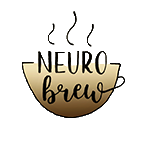Is it possible to see with your tongue?
In a groundbreaking study conducted in the 1960’s, congenitally blind people were taught to identify shapes, read, and even recognize supermodel Twiggy.
This was done using a small plastic device covered in electrodes that sits in the mouth and sends vibrating electrical signals to the tongue. In a sighted person, these signals are usually received through the eyes and sent directly to the visual cortex in the back of the brain where sight is processed. In a congenitally blind person, the brain tissue in the visual cortex is often still healthy, but the optic nerves are damaged, so there isn’t a path for visual signals to travel.
However, this device created by neuroscientist Paul Bach-y-Rita took advantage of a process now coined “sensory substitution:” the visual-related information applied to the tongue is sent to the sensory cortex, where taste is processed, via healthily functioning nerves and then is redirected to the visual cortex from there. It’s like if you wanted to drive from Ohio to North Carolina, but the highway you’d usually take to get there is closed off. So, you have to make a bit of a detour along some backroads to get there.
This study demonstrated for perhaps the very first time that the brain is capable of rewiring itself and can even compensate for damaged tissue, a notion that was outrageous at the time and unheard of in the field of neuroscience. The brain’s ability to rewire itself would become known as “neuroplasticity,” and it would revolutionize the way that we see the brain.
